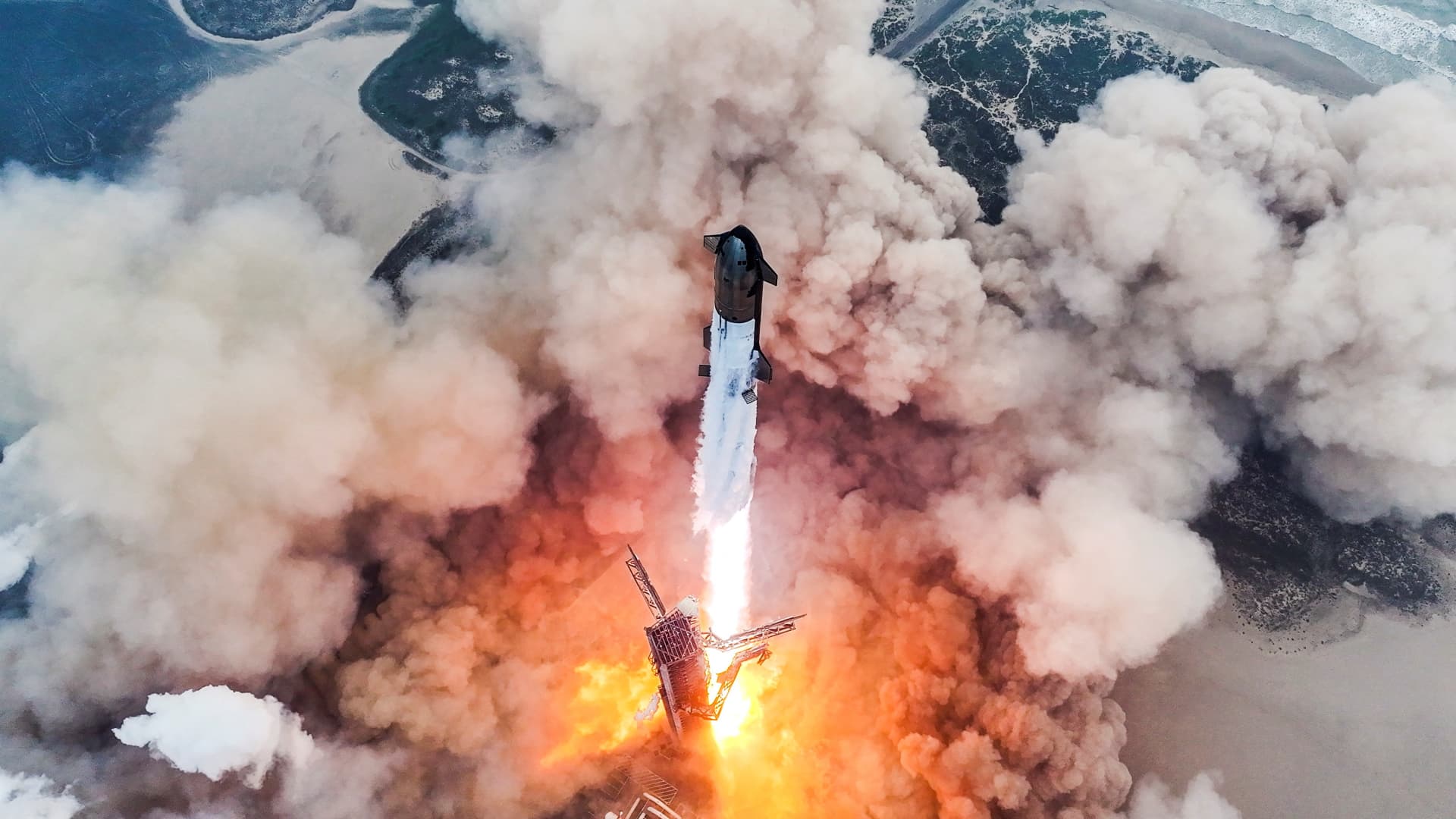SpaceX’s Starship launches its fourth flight test from the company’s Boca Chica launchpad, designed to eventually send astronauts to the moon and beyond, near Brownsville, Texas, U.S. , in this handout picture obtained on June 6, 2024.
Spacex | Via Reuters
Elon Musk’s SpaceX violated environmental regulations by repeatedly releasing pollutants into or near bodies of water in Texas, a state agency said in a notice of violation focused on the company’s water deluge system at its Starbase launch facility.
The notice from the Texas Commission on Environmental Quality (TCEQ) last week came five months after the Environmental Protection Agency Region 6 office, which covers Texas and surrounding states, had also informed SpaceX that it violated the Clean Water Act with the same type of activity.
The notices and related investigative records, obtained by CNBC, have not been previously reported.
TCEQ said its agency’s office in the South Texas city of Harlingen, near Starbase in Boca Chica, received a complaint on Aug. 6, 2023, alleging that SpaceX “was discharging deluge water without TCEQ authorization.”
“In total, the Harlingen region received 14 complaints alleging environmental impacts from the Facility’s deluge system,” the regulator said in the document.
Aerospace companies, including SpaceX, generally need to be in compliance with state and federal laws to gain approval from the Federal Aviation Administration for future launches. SpaceX was seeking permission to conduct up to 25 annual launches and landings of its Starship spacecraft and Super Heavy rocket at its Boca Chica facility. Notices of violation could delay those approvals and result in civil monetary penalties for SpaceX, further probes and criminal charges.
SpaceX didn’t immediately respond to a request for comment.

A rush to rebuild
On July 25, 2024, an environmental investigator with TCEQ “conducted an in-house compliance record review” to determine SpaceX’s compliance with wastewater regulations. The investigation found that SpaceX discharged industrial wastewater without a permit four times between March and July of this year.
Water deluge systems with flame deflectors diffuse heat, sound and energy generated by orbital test flights and rocket launches. But SpaceX didn’t build that system into its launch site at Boca Chica before it began test flights of the largest rocket ever, Starship.
SpaceX is developing Starship to transport people and equipment to the moon and, if Musk eventually realizes his grand vision, to colonize Mars. In its first test flight of Starship in April 2023, energy from the rocket caused SpaceX’s concrete launchpad to explode, and its spacecraft also blew up in mid-air.
Chunks of concrete were hurled into a nesting and migration site important to some endangered species nearby and a 3.5-acre fire chewed through Boca Chica State Park Land south of the launchpad. In response, environmental groups filed a lawsuit against SpaceX and the FAA, which had authorized its launches.
With Musk pushing for another orbital test flight within one to two months, SpaceX rushed to rebuild the launchpad installing a new water deluge system to keep it from exploding again. The company bypassed a permitting process, according to the regulators, which would have required it to meet pollutant discharge limits, and say how it would treat its wastewater.
SpaceX ran its first full-pressure test of the water deluge system in July 2023. About a month later, on Aug. 25, 2023, the EPA initiated a probe and requested information from the company regarding its wastewater discharges and more.
The agency issued a formal notice of violation to SpaceX on March 13, according to records obtained by CNBC.
On March 14, despite receiving the EPA notice a day earlier, SpaceX pressed ahead with its third test flight of Starship, again using its unauthorized water deluge system at the launch site.
The company hit new milestones with the test flight and Musk appeared triumphant. NASA chief Bill Nelson congratulated SpaceX on “a successful test flight!” although the rocket was lost during its descent above the Indian Ocean.
Environmental engineer Eric Roesch, whose ESG Hound blog focuses on business and sustainability, predicted SpaceX would need a water deluge system at the launchpad even before the first test flight of Starship. He was also among the first to call out SpaceX for using such a system without proper permits.
Once the agencies had informed SpaceX it was in violation of environmental regulations, continuing with launch operations at Starbase put the company at greater legal risk, Roesch said in an interview.
“Further wastewater discharges could trigger more investigations and criminal charges for the company or any of the people involved in authorizing the launches,” he said.
The Federal Aviation Administration said Wednesday that SpaceX is not yet clear for another test flight of its Starship Super Heavy launch vehicle.
The Washington Post | The Washington Post | Getty Images
Years of violations
Roesch also pointed out that after receiving a notice of violation from the EPA, SpaceX was required to apply for a permit within 30 days. The company didn’t submit its application until July 1, about 110 days later, according to a copy of its application made available through the TCEQ’s public records office.
“They’ve been violating wastewater regulations for years, and they continue to do so seemingly with the FAA’s blessing,” Roesch said.
Kenneth Teague, a coastal ecologist based outside of Austin, evaluated the 483-page SpaceX permit application. Teague, who has more than three decades of water quality and coastal planning experience, told CNBC the application was full of holes, missing basic details about water discharge volumes, the temperature of the effluent and outfall locations.
Teague said he’s especially concerned about the concentration of mercury in the wastewater from the SpaceX water deluge system. The levels disclosed in the document represent “very large exceedances of the mercury water quality criteria,” Teague said.
According to the U.S. Geological Survey, mercury is “one of the most serious contaminants threatening our nation’s waters because it is a potent neurological poison in fish, wildlife, and humans.”
Teague said high temperature discharges, and pollutants like mercury in high concentrations, could cause “significant negative impacts,” like killing off the “little critters” that make up seabirds’ diet.
“The SpaceX application fails to address this very serious concern,” he said.
CNBC reached out to the FAA on Friday. The agency didn’t provide a comment for this story but announced on Monday that it’s postponing public meetings that had been planned for this week. The meetings were for an environmental assessment for “SpaceX’s plan to increase the launches and landings of its Starship/Super Heavy vehicles scheduled at the Boca Chica Launch Site in Cameron County, Texas.”
The FAA didn’t provide a reason for the postponements and said new dates will be announced in the future.
WATCH: High above the clouds















